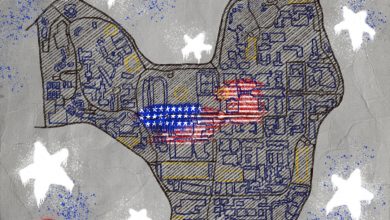The Fear of “Strange Men”: A Childhood Lesson
When I first saw the video of a mother teaching her daughter how to avoid and adamantly say “no” to a “strange man,” I couldn’t help but smile at the faces the child made and the innocence of her responses. After finishing the video I went back to my favorite parts, especially the moment where the child’s reply to “Let’s go eat cookies” is “I like that,” said with a giant smile on her excited face. While watching this video made me want to share it with all my friends and agree with comments like “this is the cutest thing I’ve ever seen,” it also forced me to remember when I was first taught to be afraid of strangers, more specifically, afraid of strange men.
As a little girl, my great grandmother’s lessons about strangers were put into the forefront of my consciousness as she constantly reminded me of the “rules” I must follow if I wanted to be safe.
She told me that if I was playing in the yard and a man drove up trying to talk to me, I should immediately run to the front door and lock it behind me. At first, I didn’t take her seriously and would laugh away her lessons, much like the girl in the video. In the beginning, it was a silly game. But as she continued to remind me of this warning, and followed it up with a longer list of rules such as don’t walk alone, don’t go into dark places you are unfamiliar with, and don’t use a public bathroom without a friend or an adult, I began to realize that I couldn’t just smile her words away and feel safe.
At the age of 4, I began my “protection regime” with the daily ritual of practicing an all-out sprint to my front door from the top of my yard. I would pretend that someone was chasing me, and if I won the race I was awarded with my life.
As dark and traumatic as this routine sounds, I felt it was necessary based upon what I had been told about the strangers who would appear nice at first, but were secretly waiting to trap and take me away.
Sometimes I would fall on my run to the front door, as my little feet couldn’t keep up with the pace that my brain screamed at them to maintain, and sometimes I didn’t make it to the front door in time. In these moments I was paralyzed, and while slamming the door behind me, my body burned with adrenaline and my head was dizzy with fear.
As I grew up, I made it a point to never go anywhere alone, to look around me at all times, and stay aware of anyone who might make an attempt to talk to me. But, as I tried to make sure that I was always safe from some looming fate, I realized my younger brother wasn’t growing up with this similar worry or seemingly “inherent” fear of the world.
Growing into our teen years only exaggerated the difference, and I finally asked him if he was afraid to walk alone. When he said no, I felt that I needed to ask him a follow up question. “Did Nonna [our great grandma] ever tell you those stories? The ones about avoiding being kidnapped or followed on the street?” His answer, “No.”
In a world where we teach girls from a very young age that they must be afraid of “strange men” and are an instrumental factor in their own protection against such perpetrators, we raise women who know what to be afraid of but not how to confront the origins of the problem.
While girls are objectified, sexualized, and told that inequalities in treatment are “natural,” the girls who grow up scared of kidnapping, sexual assault, and violence against their bodies do not represent a small fraction of society, and many will have their fears materialize no matter what they do to protect themselves against strangers, or more likely, the people they trust.
As the video of a mother instructing her daughter how to say “no” to a strange man speaks to the loving protection a parent can offer a child, it also reveals a society in which a mother must be afraid that strange men are waiting to prey upon her daughter. This fear does not subside as the girl grows into a woman, but will continue throughout the lives of both the mother and the daughter. Because this internalized fear of male predators seems to be a natural part of growing up, and consequently, a fact upon which offering guidance to resist such encounters is offered to young girls, we remain in a cycle of fear that cannot see beyond or repair itself.
Although it could be argued that there is always going to be evil in this world, such as kidnappers, perpetrators of assault and those who commit sexual violence, we cannot ignore the gendered discrepancy of the victims and survivors of such abuses.
But while we seemingly cannot stop teaching our daughters how to run, how to hide, and how to avoid, we do not acknowledge the other side of the story; we are not teaching our sons to fear.
Will we ever be able to teach our daughters to not be afraid? How can we bring about a society in which the fear of daring to walk alone slides off the shoulders of 4 year old girls to women of 55?
I am 21 years old and remain in a constant fear that I want to shake. I can only begin by challenging the inequality which allows for the discrepancy in fear and statistics of the abuse we are afraid of. While trying to protect ourselves is fundamental to our existence, and teaching children to do the same seems logical as well, we must go a step further and challenge the root of the problem.
Why are girls taught to fear? Who exactly do we sprint to our front doors to hide from?





Do you have a link to the video? Is it something that can be found online? I’m doing a presentation on how women are conditioned to be in fear from a young age, as a response to the “100 catcalls” video, and would love to be able to watch the video you referenced as well